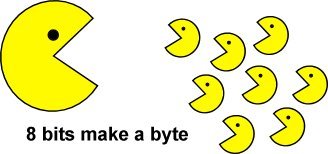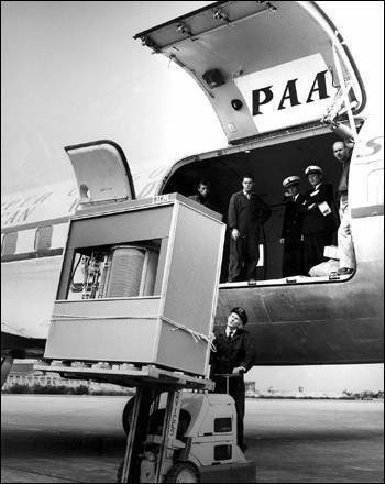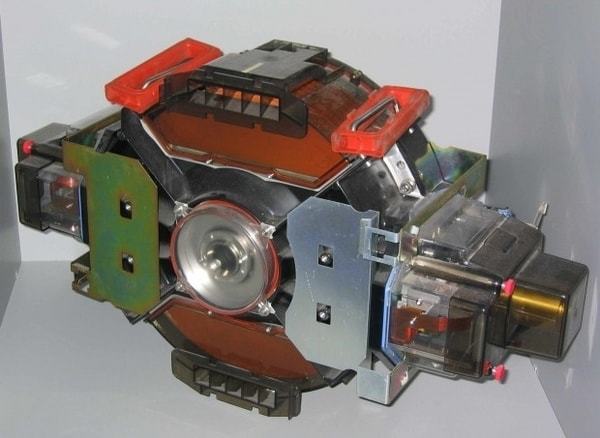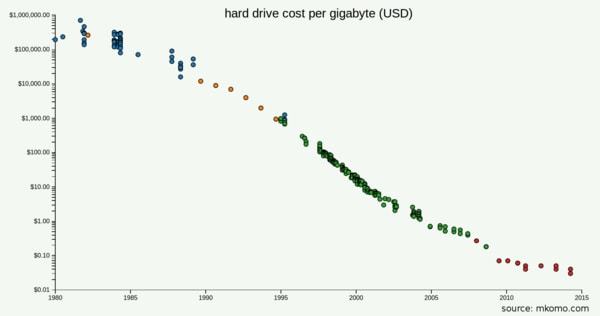Gigabyte history
We were going to publish a serious article on comparing the pricing policies of cloud providers, but decided that the pre-Christmas week is not the best time for this, so today's article is more for entertainment than for serious thought. When today every one of us thinks about the storage of personal data, the easiest way is for him to think in terms of gigabytes. Your phone must have more than 16 gigabytes (GB) of memory for storing all photos (using iCloud or Google disk, recording contacts and so on ...), your laptop must have at least 4 GB of RAM and 250 GB of hard disk space to be considered worthy. Everyone just does what they say about gigabytes. And for good reason.
Yesterday's version of a terabyte can rightly be considered a gigabyte. Having 10 GB of storage was not long ago considered sufficient to store all data until the end of its days.

Photo source: pinterest.com
Now everything has changed, and even there is more than 2 gigabytes of space in the key-chain, and there is such a storage facility as a round trip on public transport.
But why? What has changed so much in the storage world in order to reduce the value of the once powerful gigabyte to the cost of cheap candy? Let's look at the history of gigabytes.
What is gigabyte?
It makes no sense to talk about the history of gigabytes, without saying what it is. For most, this information may be superfluous (then just skip this section).
It is known that one gigabyte is equal to 1,000,000,000 bytes (the “giga” prefix means 10⁹, according to the international system of units). It is surprising that gigabyte has a second definition: 1,073,741,824 bytes. How can one concept mean two completely different numbers? Deal in decimal and binary system of calculus.

In the decimal system, 1 GB = 1,000,000,000 bytes. This definition is commonly used to determine the size of a hard disk and the transfer rate. In a binary system, 1 GB = 1,073,741,824 bytes, and this equality is used to denote the amount of RAM, or RAM.
')
Photo source:
Any average user is confused by the situation when he buys a Windows computer with a 500 GB hard drive, and when he comes home he finds 466 GB available, and, of course, he considers himself deceived. But this is just a digit in the binary system!
To fix this, the international value system standardized binary prefixes and equated them to 1024. With such a prefix, 1 GB is approximately equal to 1 gibibyte.
What is gibibayt?
From this point on, things get a little more confusing. Note that this paragraph is just for fun, because nobody uses gibibytes, although they may be useful.
1 GB equals approx. 1.074 Gib, approximate enough so that the equality of 1 gigabyte = 1 gibibyte
So, returning to a computer with a 500 GB hard disk, it’s worth considering that the calculation is carried out in gibbytes, but the consumer understands the standard gigabyte rather than such ephemeral values.
History tour
 This picture is from the recent past, and it already appeared in one of our articles. This is the year 1956, the hard drive for IBM computer 305 RAMAK. It weighs more than a ton and can store only 5 megabytes (MB).
This picture is from the recent past, and it already appeared in one of our articles. This is the year 1956, the hard drive for IBM computer 305 RAMAK. It weighs more than a ton and can store only 5 megabytes (MB). 
Then there were hard drives like the one we see below: the world's first 1 GB hard drive, IBM 3380 HAD, in the photo below.
Photo source: numbersleuth.org
This hard drive was used for a computer in 1980, and the computer itself was the size of a refrigerator. So, it took us 23 years to go from 5 MB to 1 GB, and what happens in 2003? What was the total size of the personal storage device at the time? In 2003, Serial ATA was invented with an increased write and data transfer speed, which reduces the size and cost. Not surprisingly, the average size of a hard disk in 2003 was about 150–250 GB.
Photo source: aphelis.net
Today, it is rather difficult to find a computer with less than 1 terabyte (1000 GB) of hard disk space (by the way, laptops in this regard are still catching up and catching up).
Storage cost
All these data bytes should cost money. Storage volumes and prices develop in inverse proportion - what else can I say? Take a look at the chart below.

Photo source: mkomo.com
This is absolutely unbelievable. Over 35 years ago, the cost of 1 GB was reduced from $ 1 million to $ 0.05. Awesome
Future storage
As you know, the era of physical storage media is coming to an end. Moore's Law. The flowering of the cloud and the ability to transfer what we used to download, changed the idea of storage, and gigabytes today does not have the same value as before. Reduction of attention to the amount of memory occurs with a simultaneous increase in the importance of the transmission rate.
And although the days of megabytes have passed, it seems that a gigabyte
Source: https://habr.com/ru/post/318712/
All Articles